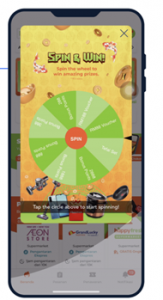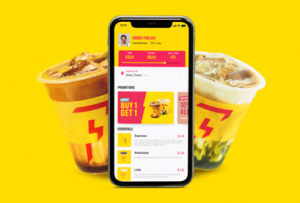By James Dye, Country Director UK/I at Talon.One
As online retailers continue to look for ways to differentiate themselves and improve the customer experience, many brands have been turning to an age-old tactic to drive sales: gamification. Retail gamification can be as simple as awarding points for purchases or as involved as creating different rewards for specific customer behaviour. The guiding principle is the same: gamification makes a serious process, i.e. accessing a website to find out more information or purchasing a product online, more attractive, more compelling, and more likely to hold a customer’s interest. Even better, it’s a tactic that can incentivise the entire customer journey, from acquisition to retention.
In our latest article, we’ll dive into the psychology behind gamification, advice on implementation, and examples from brands in Southeast Asia, that are leading the way when it comes to gamified experiences.
The psychology behind gamification
Gamification is especially powerful because it leverages the brain’s reward mechanism, which releases dopamine – a feel-good hormone – when customers engage in activities that are fun and engaging. This can lead to increased brand loyalty, repeat purchases, and positive word-of-mouth marketing. Research on the effect of gamification on customer loyalty shows brands that incorporate gamification into their customer engagement strategies see a 47% rise in engagement, a 22% rise in brand loyalty, and a 15% rise in brand awareness.
Gamified shopping experiences also help ecommerce businesses bring a degree of excitement that online shopping typically lacks. Data from a study on gamification and customer experience in online retail shows that the game components inspire a customer to spend more time on a gamified app, which increases traffic and screen time for online stores. In terms of the business impact, we’ve seen some clients improve their conversion rates by up to 30% through simple gamification mechanisms.
The results of these studies highlight that gamification has to be implemented carefully, giving consideration to both business aims and what motivates and interests customers. The key is to find the right game that stands at this crucial juncture, entertaining users while helping the business achieve concrete results.
For retailers looking to include gamification aspects in their strategy, it’s worth looking at Southeast Asia retailers for inspiration. Brands in the region, from luxury to mainstream businesses alike, are already using gamification to great effect – but we’re also having more and more conversations about gamification in Europe and the Americas as the trend spreads around the world.
Three examples of gamification to encourage customer loyalty
A simple example of gamification includes rewarding customers with achievement stamps and badges, helping bring out customers’ inner collector. Just like games give players awards and badges for completing certain objectives, businesses can set up badges when customers complete certain actions – whether that’s repeat purchases or referring friends. Whether you reward your customers with non-financial rewards like a badge or monetary prizes like coupons or cashback, the data that gamified elements provide about customer trends and shopping habits is highly valuable when it comes to planning ahead and increasing your sales in the long term.
Louis Vuitton introduces adventure-based mobile app game
Sometimes gamification is simply used to provide users with an exciting experience, without encouraging a purchase. Gamified experiences are most commonly served to customers via their app. On one side of the spectrum, brands such as Louis Vuitton have built entire, complex games. Released in celebration of the fashion house’s 200-year anniversary, “Louis: The game” incentivises players to learn about its history and has been dubbed “better than Fortnite”. Players experience fun challenges in six imaginary worlds that exist outside of time, where they will play as Louis Vuitton’s mascot Vivienne.
Online grocery platform encourages customers to “spin the wheel”
A more accessible way to integrate gamification in-app is to include competitions and prize giveaways. One South Asian online grocery platform levelled up its loyalty program by adding an engaging gamified element called Spin the Wheel, which users could “spin” in-app to be in with the chance of winning a certain amount of loyalty points.
One of the key benefits of Spin the Wheel was its low barrier to entry — which ensured minimum confusion and maximum uptake among users. The scheme maximised the rate that loyalty points were given out, getting users familiar with accumulating points and ensuring they become active loyalty program members. As a result, the grocery platform was able to drive a 14% increase in repurchase rate.

How Flash Coffee is leveling up the in-app experience
Another brand integrating spin-to-win functionality into its loyalty program is Singapore-based coffee chain, Flash Coffee. The brand is disrupting the coffee industry with their app‐based, tech‐enabled take on coffee, and with its focus on mobile, creating a delightful in-app experience is high on its agenda.
To maximise user engagement, they added a spin-to-win functionality to their program, nudging customers towards a daily log-in to play a mini-game with the chance to win unique prizes.

The idea came to Flash Coffee founder and CEO, David Brunier, as he considered users’ path to purchase: “My main concern was — what do we want our customers to do, and how can we make it fun and rewarding in the app?”.
To maximise user engagement, they added a spin-to-win functionality to their program, nudging customers towards a daily log-in to play a mini-game with the chance to win unique prizes. The idea came to Flash Coffee founder and CEO, David Brunier, as he considered users’ path to purchase: “My main concern was — what do we want our customers to do, and how can we make it fun and rewarding in the app?”.
The spin-to-win functionality was a simple yet powerful gamified solution as it cultivated emotional loyalty while leading to concrete business results – by influencing three main categories:
- Surprise: Flash Coffee’s app updates regularly with new, timed rewards – which keeps the game feeling fresh and customers coming back for additional prizes.
- Delight: Customers gain a sense of satisfaction from playing simple mini-games
- Earn and burn: Customers are keen to redeem their points as they needed to work to gain them
In conclusion
Gamification doesn’t have to be complex to work wonders for brand exposure and customer experience. By introducing a fun twist that users might not expect, brands can level up their customer experience while positively reinforcing buying behaviour with rewards and game-like features.
To learn more about the benefits of gamification, take a look at Talon.One’s white paper, “Promotion gamification: How and why it works.”
Published 15/06/2023



